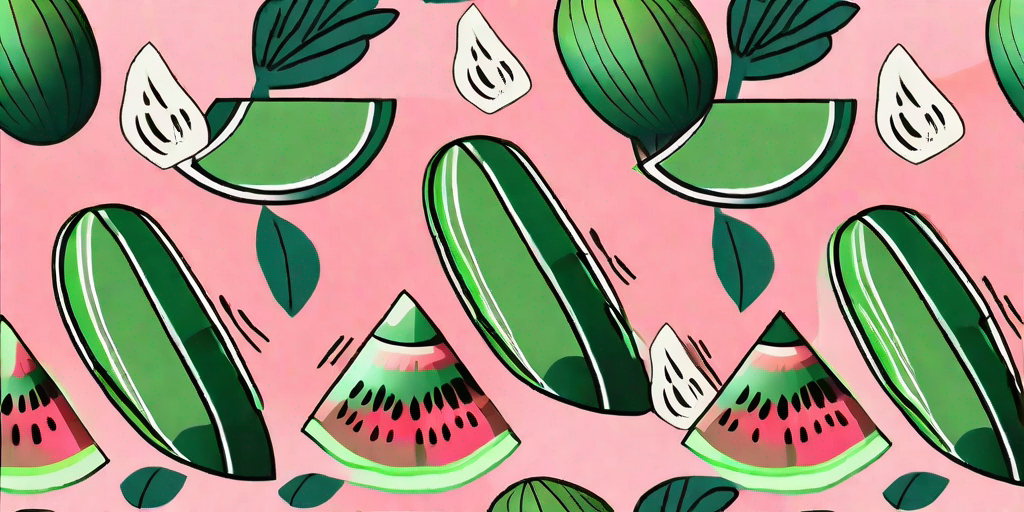
Welcome, green-thumbed enthusiasts and fruit fanatics! If you've ever wondered how to grow those juicy, seedless watermelons that are the epitome of summer refreshment, you're in the right place. This guide will spill the beans, or rather, the lack of them, on the art of growing seedless watermelons. So, let's dive right into the melon patch!
Understanding Seedless Watermelons: A Marvel of Nature and Science
Before we delve into the 'how-to', it's crucial to understand the 'what'. Seedless watermelons, contrary to popular belief, aren't the result of some horticultural hocus pocus. They're a product of good old-fashioned plant breeding, with a dash of scientific genius.
These melons are hybrids that result from crossing a diploid watermelon (one with two sets of chromosomes) with a tetraploid watermelon (one with four sets of chromosomes). The resulting offspring, or triploids, have three sets of chromosomes, making them sterile and unable to produce seeds. It's like nature's version of a magic trick!
The Mystery of the 'Seedless' Seeds
Now, you might be scratching your head, wondering how you can grow seedless watermelons from seeds if they're sterile. Well, the seeds you plant aren't truly seedless. They're the seeds of the triploid watermelon, which can grow into a fruit-bearing plant but won't produce viable seeds of its own.
These seeds are like the mules of the plant world - hardworking, but unable to pass on their genes. So, while you'll see small, white seeds in your seedless watermelon, they're just empty shells, not capable of germinating into new plants.
How to Grow Seedless Watermelons: A Step-by-Step Guide
Now that we've cleared up the mystery of the seedless seeds, let's get down to the juicy details of growing these delicious fruits. Fear not, for while it might sound complicated, it's actually quite a straightforward process. All you need is a little patience, a lot of sunshine, and this foolproof guide.
Step 1: Choosing and Preparing the Site
Like all good real estate, the key to successful watermelon growing is location, location, location. Watermelons love the sun, so choose a site that gets at least six hours of direct sunlight each day. The soil should be well-draining and rich in organic matter. A pH between 6.0 and 7.0 is ideal for these sweet fruits.
Prepare the site by removing any weeds or stones and working in plenty of compost or well-rotted manure. If you're in a cooler climate, consider using black plastic mulch to warm the soil and speed up germination.
Step 2: Planting the Seeds
Plant your seedless watermelon seeds about an inch deep, in hills or mounds of soil. Each hill should contain three seeds, and hills should be spaced about 2 feet apart, with at least 6 feet between rows. This gives the vines plenty of room to spread out.
Remember, seedless watermelons need a pollinator, so be sure to plant some seeded watermelon plants nearby. A good rule of thumb is one pollinator plant for every three seedless plants.
Step 3: Caring for Your Watermelon Plants
Watermelon plants need plenty of water, but they don't like wet feet, so water deeply but infrequently. A layer of straw mulch can help retain moisture and keep weeds at bay. Feed your plants with a balanced fertilizer when they start to vine, and again when the fruits start to form.
Watch out for pests like aphids and cucumber beetles, and diseases like powdery mildew. Regular inspections and prompt treatment can keep these problems from getting out of hand.
Harvesting and Storing Your Seedless Watermelons
After all your hard work, there's nothing quite as satisfying as harvesting a ripe, juicy watermelon. But how do you know when it's ready? Look for a dull skin, a hollow sound when you tap it, and a yellow or cream-colored spot where the melon was resting on the ground.
Once harvested, seedless watermelons can be stored at room temperature for about a week, or in the refrigerator for two to three weeks. Just be sure not to cut into them until you're ready to eat, as cut watermelons should be eaten within a few days.
FAQs
Why are my seedless watermelons producing seeds?
If your seedless watermelons are producing seeds, it's likely that the pollinator plant has cross-pollinated with the seedless plants. To prevent this, make sure to plant your pollinator plants downwind of your seedless plants, and consider using a different variety for pollination.
Can I save the seeds from my seedless watermelon?
While you might see small, white seeds in your seedless watermelon, these are sterile and won't germinate. The only way to grow more seedless watermelons is to buy more seeds.
Why aren't my watermelons growing?
Watermelons need plenty of sun, water, and nutrients to grow. If your plants aren't producing fruit, they might be lacking in one of these areas. Check your soil pH, water regularly but deeply, and feed with a balanced fertilizer.
Conclusion
There you have it, folks! The foolproof guide to growing seedless watermelons. With a little patience, some sunshine, and a dash of gardening know-how, you too can enjoy the sweet, juicy taste of homegrown seedless watermelons. So, what are you waiting for? Get out there and start planting!











